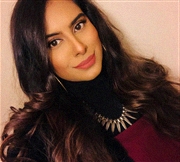Tutor HuntResources Media Resources
Representation Of Women In Film
GCSE Media
Date : 25/11/2014
Author Information

Uploaded by : Aniqa
Uploaded on : 25/11/2014
Subject : Media
One traditional representation of women is, 'the popular girl' who is seen as being beautiful and desired by everyone and aspired to by other girls, this can be seen in 10 things I hate about you through Bianca's character. She is often seen dressed in skirts, dresses or revealing clothing throughout the whole film, thus creating a representation of her being rather promiscuous which ties into Laura Mulvey's Male Gaze theory, which describes women as playing a part in film for the interest of men, she suggests that all women in film are there simply to be looked at (to-be-looked-at-ness) as in her opinion films are viewed from a patriarchal view point. This idea of the popular girl being seen as a common representation that is familiar amongst all age group of viewers is also seen in Kidulthood, through Becky. However the representation of 'the popular girl' has positive connotations as most teenage girls desire to be 'the popular girl', but in Kidulthood Becky creates a negative representation of women. She creates a degrading representation of women as she sells herself for drugs and materialistic things (an expensive dress). This not only creates a negative representation of women but also highlights the pressure on women to look a certain way. The fact that Becky sells herself so that she can afford an expensive dress suggests that the media plays a key role in influencing young women into wanting to look a certain way. This links to the Hypodermic needle theory, and how the media are constantly reinforcing the importance of image to young women. The Hypodermic needle theory can be liked to Trans America, when Bree is seen influenced by the women around her and the media (watching programme on voice coaching). This suggests that women are constantly being influenced to look and behave a certain way in order to feel accepted by society and fit to the image that the media has created. Although Bree is still a man her image conforms to that of an upper class woman and after meeting her son Toby, Bree plays into the character of a mother and so she becomes represented stereotypically as a domestic woman. On the other hand we have Alyissa from Kidulthood who also plays into the Hypodermic needle theory. In the film she plays a teen mother, however viewers do not look at this as being too negative or feel shocked by it, as teenage pregnancy is a topic that is constantly reinforced in the media, thus making an audience feel comfortable with it as the constant reinforcement has made it seem as a norm amongst our society. Alyissa also is represented as being domestic and motherly, however this is shown in a non stereotypical way as Noel Clark (director) has almost flipped the stereotype so that it suits a modern audience. Women are also represented as being strong and independent. This is seen through Kat in 10 Things I hate about you, she is shown to be a strong opinionated character, thus subverting traditional images of women such as being weak and inferior to men. Kat's character subverts the male gaze theory as she plays a key role through the film and is not represented as a promiscuous woman but rather an independent character who is dominant rather than inferior. This conforms to the idea of feminism and how women can be shown to be powerful and dominant as well.
However this idea of women being represented in a positive way is fairly new in media. As most media focuses on representing women as sex objects or living amongst a male dominated society. Only recently have we seen women being positively represented, but this still remains a minority within media. It is because of the way that women are represented in the media, such as looking beautiful, being slim, being domestic, that women in society feel pressurised into looking and behaving a certain way so that they can feel socially accepted. They see these representations as reality as they shape the audiences view of what is acceptable or not acceptable in today's society.
This resource was uploaded by: Aniqa
Other articles by this author
- Women in the Media
- Hypodermic Needle Theory
- Dracula and The Picture of Dorian Gray
- Shakespeare and Jane Austen
- The Great Gatsby and A Street Car Named Desire
- Victorian Class System in The Picture of Dorian Gray
